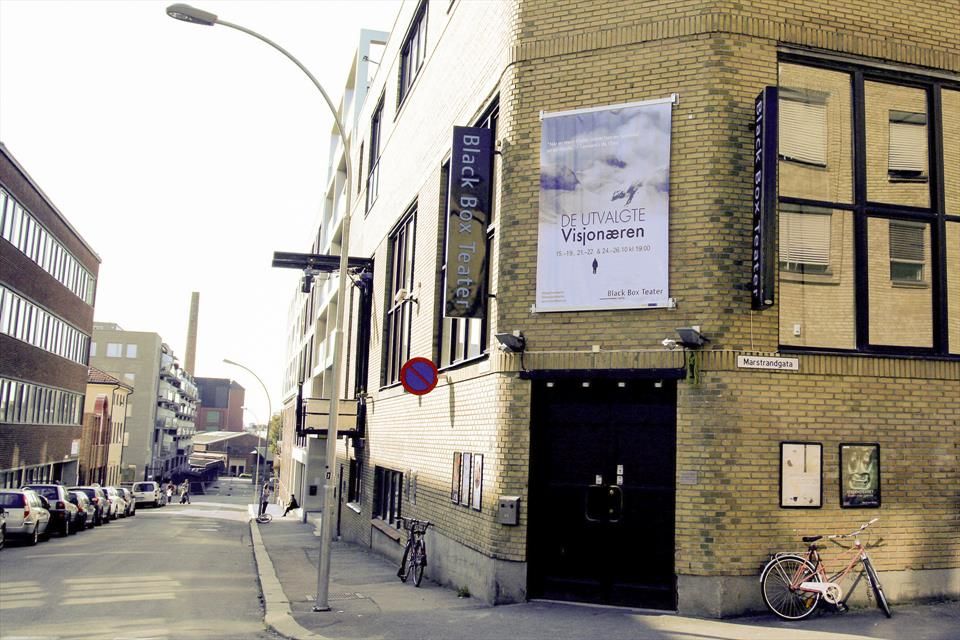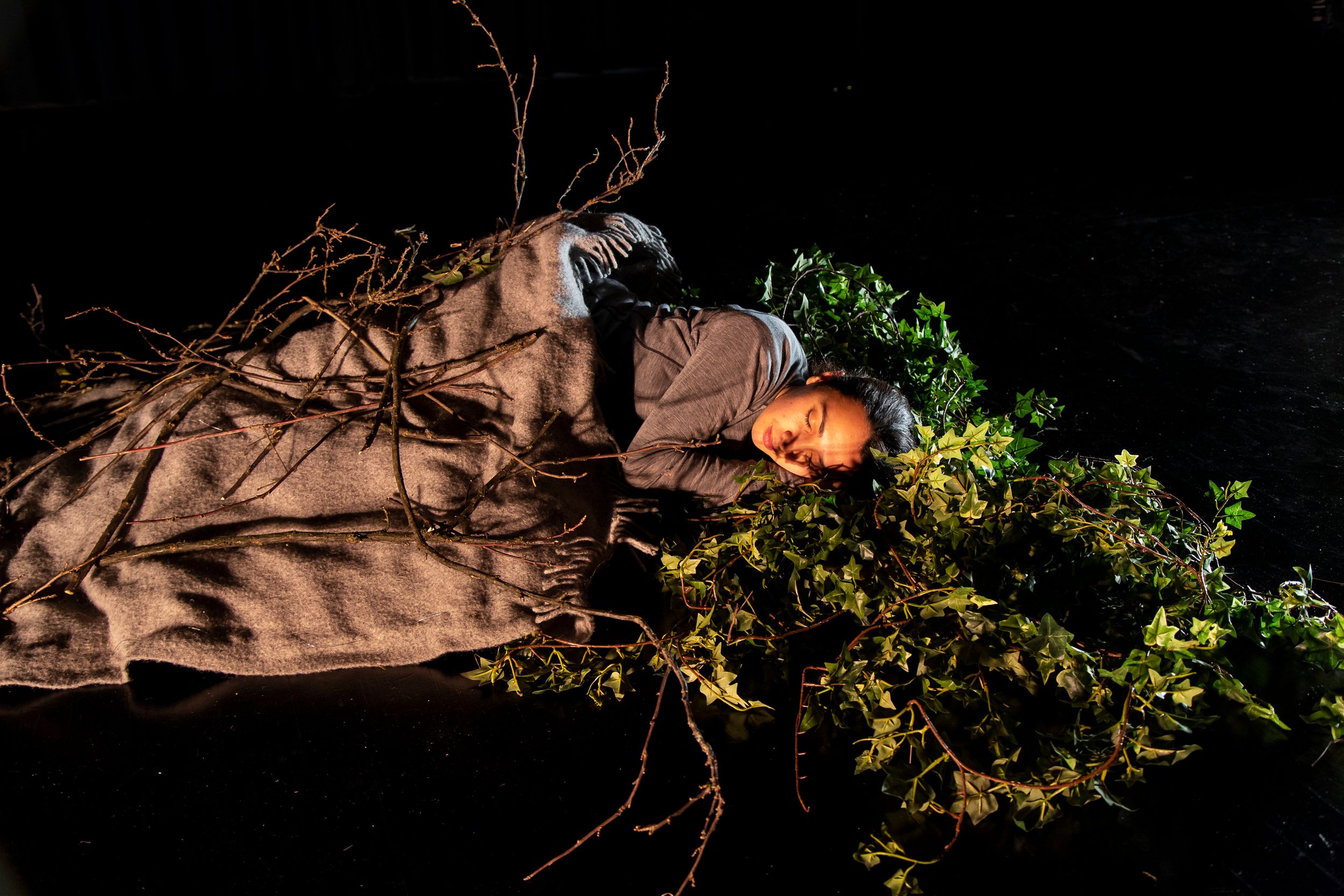Black Box teater was founded in 1985 by Teatersentrum (later Danse- og teatersentrum / Performing Arts Hub Norway) as a venue for the free dance and theater groups.
In the beginning, Black Box teater was a pure rental theater, located at Aker Brygge, where all groups were welcome to present performances for free. The theater had no theater manager, but a general manager who managed the groups’ playing periods.
In 1991, the then managing director and former choreographer/dancer Inger Buresund was hired as artistic director of Black Box teater. In 1994, she became the theater’s first theater director – a position she held until 2001.
1991 was also the year when Black Box teater teamed up with BIT Teatergarasjen in Bergen and Teaterhuset Avant Garden in Trondheim to create Nettverk for Scenekunst (Network for Performing Arts), a tour collaboration whose main purpose was to show international guest performances in all these three cities.
In the early 1990s, the City of Oslo announced that Black Box teater had to acquire an artistic profile if it was to continue receiving grants. The program was unpredictable in terms of quality, and in addition the audience was declining. The theater introduced a selection of quality assured performances under the title “Performance of the Month”. After this, Black Box teater gradually developed from being a pure rental theater to becoming a programming theater with its own, clear programming profile. As a result, free groups and performing artists were no longer automatically allowed to put up their performances in the theater. Performing Arts Hub Norway is still the owner of the theater, but is no longer a pure membership organization. They will, according to their statutes, ensure that Black Box teater has full artistic freedom and independence for its owner.
During the 1990s, Black Box teater was repeatedly threatened with closure due to lack of financial support.
In 2001, Kristian Seltun took over as artistic director at Black Box teater. During Seltun’s period as artistic director, the theater became more visible on the international map, and as a result Black Box teater has also increased its national status. Seltun also established the performing arts festival Marstrand.
In 2003, Black Box teater had to move out of its premises at Aker Brygge, and for a long time it was unknown whether the theater would find new premises at all. Finally, the theater signed a contract with Orkla Eiendom on current premises at Rodeløkka, formerly Bergene chocolate factory, where the theater has been located since 2004.

In 2009, Jon Refsdal Moe took over as artistic director at Black Box teater. During Moe’s period, the theater stopped charging the companies for rent. In 2013, the Marstrand festival was renamed Oslo Internationale Teaterfestival – a name the festival still is carrying. Moe lifted the festival from being an extended weekend with a narrow focus to becoming a performing arts festival of international caliber. Jon Refsdal Moe made the theater accessible to a larger audience both through his programming and his flair for what was moving in the field, but also with his communication with several parts of the art and culture field. The theatre's audience increased significantly during the years with Moe as theater director.
In 2016, Anne-Cécile Sibué-Birkeland took over as artistic director at Black Box teater. According to the theater board, the present artistic director continues to run the theater in a clear and open way through a programming and a dialogue that closely follows artists and the development of the performing arts in Norway and internationally. Sibué-Birkeland has prioritized showing a diverse selection of artists and cross-artistic projects, strengthening the dissemination program, opening the theater up towards the city through collaboration and site-specific performances, and increasing the support of the artists. During Sibué-Birkeland’s time as artistic director, Black Box teater has seen a significant increase in the state subsidy, by arguing for, among other things, its national status and affiliation in Oslo as a programming theater. The theater has also, particularly through Oslo Internationale Teaterfestival, clarified its local connection to Oslo.
In 2018/2019, Black Box teater performed the play Ways of Seeing by Pia Maria Roll, Hanan Benammar and Sara Baban. This controversial play sparked much debate around freedom of expression and artistic freedom. Three of the creators of the work, as well as the artistic director Sibué-Birkeland, were reported to the police and charged with violating privacy. The police later decided to dismiss the charges. Ways of Seeing and the debate that arose about the performance showed how theater can function critically toward authorities, and highlighted important questions about freedom of expression and today’s media reality.

Many Norwegian performance artists and companies have had Black Box teater as their premiere scene. Among the actors we find established groups such as Verdensteatret, Verk Productions, fieldworks (Heine Avdal & Yukiko Shinozaki), The Featured, Mette Edvardsen, Vegard Vinge / Ida Müller, Ingri Fiksdal, Findlay//Sandmark and Mia Habib productions – but also a new generation of performing artists such as Magnus Myhr, Tormod Carlsen, Ingrid Berger Myhre, Hildur Kristinsdottir & Eirik Willyson, and Ingeleiv Berstad / Kristin Helgebostad / Ida Wigdel.
Black Box teater has also presented some of the world’s leading performing arts names, such as Anne Teresa de Keersmaeker, Forced Entertainment, Tg Stan, Philippe Quesne, Gisèle Vienne, the Nature Theater of Oklahoma, Mårten Spångberg, Annie Dorsen and Trajal Harrell, as well as the more recent Jaamil Olawale Kossoko , Ligia Lewis, Dries Verhoeven, El Conde de Torrefiel, Eisa Jocson, Jaha Koo and more.








